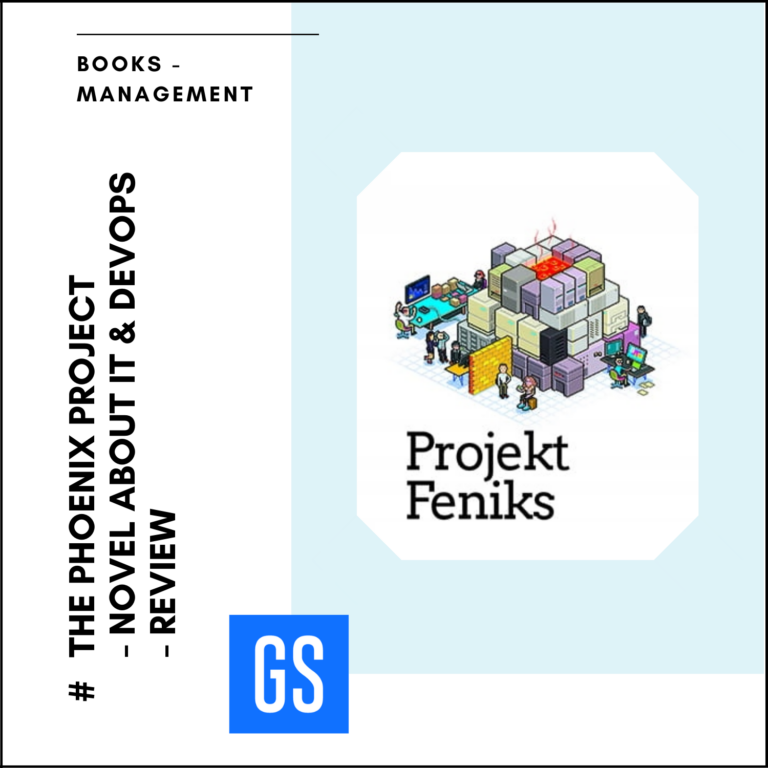Agile in it is now a standard in software development. If you want to know what agile is, check out the last article in the series.
eCommerce project management
Scrum in IT – Kanban board – 03
Kanban board in scrum projects is often one of the inseparable elements of IT project implementation. Check how to add Kanban to scrum.
Scrum in IT – Scrum process – 02
Are you wondering what is scrum and what is its course? Scrum mileage will answer your questions. See the article.
Scrum in IT – Scrum Introduction – 01
Scrum as the most popular IT management methodology. Scrum introduction to the introduction to the Scrum articles in the development of it
The Phoenix Project book – Review
The phoenix project book is a book dedicated to managers, IT specialists and people who want to better understand the business part of IT.
What is E-Commerce Project Management?
Project management is the key to effective and reliable management of projects. If you are wondering what specifically hides under this term, an explanation can be found in the articles available on the website. Project management deals with the effective project target achievement and counteracting the impact of existing risks and constraints. Project management also involves motivating the project team and ensuring proper communication and the use of appropriate tools to streamline work. The pages of this website feature information to help you explore the implementation of online store deployments using Scrum and Agile techniques.
Project Management Tools
By far the majority of online business is digital (and even cloud-based). It is therefore critical that your online business uses the best business tools available today.
Choosing the best tools with cutting-edge features will help you to seamlessly scale your business, keep your team on the move and cut unnecessary costs through automation.
Generally, any e-commerce business will operate on simple and scalable project management software. It leverages tools such as video conferencing software, time tracking software and project management tool such as ProofHub, Asana etc. to enhance team collaboration and simplify project management.
What Are Popular Project Management Methodologies?
In order to overcome certain challenges, e-commerce business owners have to make an investment in the relevant project management methodologies. Here are five of the more popular methodologies you can use for your e-commerce business.
Keep in mind, however, that it is often difficult to adapt and implement one particular project management methodology externally to your business. Perhaps you will have to use one or more PM methodologies or upgrade certain principles to make them suitable for your business requirements. Whatever you decide to do, here is a brief overview of these methodologies:
-
Agile Project Management
Agile refers to an iterative methodology whereby you create small portions of the final project in each cycle. Here you react to innovations and workflow changes, rather than blindly following a strict plan.
-
Lean Project Management
Lean project management generally incorporates a continuous workflow to keep roadblocks and delays at bay and yield ongoing enhancements. Each stage introduces new changes and improvements to the final product. The primary objective of this management structure is to deliver value to customers.
-
Waterfall Project Management
Waterfall project management is the earliest of all PM methodologies. One could claim that it has become outdated and out of fashion. This methodology, however, is the right choice when working with a small team and wanting to know what the end product will look like.
-
Scrum
The Scrum method revolves around a team integrating their know-how and effort to develop and deliver high quality, turnkey projects. The process starts by addressing the customer’s main objectives and core requirements. Scrum employs sprints, and each sprint produces a ready-to-use product, which is then refined in subsequent sprints.
-
Kanban
Kanban shares a number of similarities with the Scrum project management methodology, although it is less limiting. The Kanban PM methodology allows tasks to be categorised as ‘To Do’, ‘In Progress’ and ‘Done’. The methodology allows changes to be implemented not only after a sprint is completed, but at any time when these changes are needed.
Project Management in eCommerce – Implementation Steps
Proper project management in eCommerce is the key to smooth teamwork and success. In any project developed from scratch, there are six basic implementation steps. It is worth keeping them in mind throughout project management, implementing solutions on an ongoing basis to streamline work and facilitate the pursuit of the desired target.
Project analysis – project management also means gathering knowledge about customer needs and expectations, market information, competitors, customers, impact potential and approach paths.
User Experience Design – that is, the functional system planning from the point of view of customer interaction. The aim of the User Experience design is to provide the most positive user experience possible.
Graphic design – i.e., the production of visual creations of the system on the user side. This stage assumes the effects of implementation and positive impact on the audience.
Implementation – coding of previous work steps, integration with required external systems and provision of customized functionalities.
Testing and launch – that is, the testing stage of the functionality, performance, and efficiency of the system. The aim of this is to eliminate errors, pair with the domain and achieve the intended performance online.
Support – i.e., the process of supporting, optimizing, and scheduling further development in terms of technology, sales, and marketing.
Project Management – Scrum in IT Projects
Project management is also about being able to implement appropriate solutions. That is why the articles published on the website offer a range of solutions to streamline the work. In the IT world, it is essential to have an agile approach in the software development process. We are talking about the Agile approach involving changes during development which most often refer to the scope of implementation, the schedule and rotation within the scrum team. The blog features an introduction to the Scrum methodology of software development in IT. It is a project management methodology of the iterative and incremental type. Iterations are individual sprints lasting, depending on the project, between 2 and 6 weeks – for small and medium-sized businesses it is usually 2 weeks. Increments are releases, i.e., releases of specific elements in a project, e.g., homepage, website header. The basic principle of Scrum is to rely on self-generated team relationships and the assumption that the team will self-organize in order to deliver the project more effectively. On the website, in the project management category, there is a series of articles that has been divided into 3 parts – the first being an introduction to the topic.
It features an explanation of the roles of scrum members, which include scrum master, product owner and team. The article also shares knowledge of the operations incorporated into project delivery, addressing User Story, Story Point, Epic, and Product backlog and release, among other issues. The next article is about the workflow in Scrum. This publication provides detailed information on DoD – Definition Of Done. The key tools used for sprint planning have also been highlighted. These include, among other:
Sprint Backlog – the sprint log which provides information on what the team is doing during a sprint
Planning Poker – is a technique for estimating the time consumption of a user story similar to playing poker. Each developer lays down a card representing his/her respect.
Team velocity – the amount of work a team is able to complete during a sprint
Estimation – the estimated number of hours to complete a task
Planning – i.e., defining the tasks to be performed at a given time.
Both the above issues and the subsequent work stages, i.e., the start of the sprint and the conclusion, are described in more detail on the website. The 3rd part of the Scrum article series deals with issues related to the Kanban board, explaining what it is and how to link it to Scrum.
Project Management – Agile
Mismanagement of a project generates a lot of problems and the information about this can also be found on the blog where we introduce the topic of Agile. In IT, it is a type of software development based on an iterative and incremental model that is an alternative to the waterfall methodology, or the classic model. The key assumption of this method is to observe customer expectations or changes in the environment and react quickly to changing circumstances. The publication contrasts two project management models – classic and Agile. The overview not only gives you an idea of the differences, but also a better understanding of the main assumptions of Agile which will certainly be useful in the project management process. The publication also includes the so-called Agile Manifesto incorporating 12 key tenets. For a better understanding of the topic, the stages of work in IT based on this methodology are also included, comprising:
- Plan
- Design
- Develop
- Test
- Release
- Feedback
The aim of these stages is to create a repetitive cycle until the task in question is completed. Project management based on such a solution allows for potential corrections to be made to the prepared task on the basis of information obtained from a customer or the flexible introduction of changes arising during the development phase. In the following sections of the article, the different stages are discussed in detail, taking into account the role of specific operations on the entire IT project implementation and project management process.
Project management is the application of processes, methods, skills, know-how and experience. The underlying premise of efficient project management is the achievement of specific project targets in line with project acceptance criteria relating to predetermined parameters. Project management is also the science and art of structuring all the project elements, which includes the introduction of a new product or service, as well as the marketing campaign and development implementation measures. The role of the project manager, to whom a separate article has been dedicated, is also crucial here. In the project management category, you will therefore find all the key issues related to the project management process and recommended solutions that pass the test in a fast-paced and dynamically evolving IT environment.
Challenges You Face Without E-commerce Project Management
It is often difficult for an online merchant to maintain control over everything as they do not pay attention to the latest developments on the market, with whom they should be working and the cutting-edge technologies that are employed in the world today. Indeed, some online retailers are failing to draw a high volume of organic traffic and record good sales results merely because they have no idea in which direction their online store should evolve. All these challenges can now easily be bridged with adequate planning.
In addition to the above challenges, unless online business owners have a solid plan in place, they ought to be prepared for challenges, such as:
- Backlogged schedules
- Mismatched workflow steps
- Low sales
- Low profits
- Complete closure of the business





